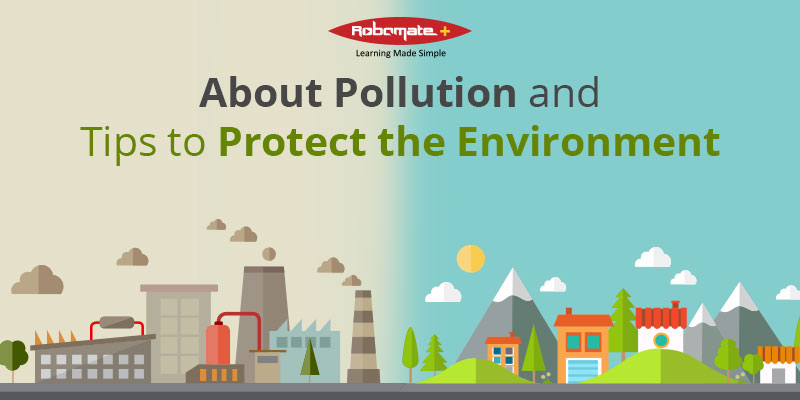The World Health Organization has warned of an increase in environmental pollution in most cities around the world. Almost 90 percent of the cities that measure their pollution exceed the quality levels established by the WHO with the consequent risk of respiratory problems and other pathogens on its inhabitants.
Ideas to Protect the Environment
The urban air quality study carried out by WHO, involving 1,600 cities in 91 countries, has shown that around half of the people living in these cities are currently exposed to levels of pollution 2.5 times higher than is considered safe.
Air pollution is getting worse due to an increase in the use of fuels – by motorized means of transport and the energy consumption of offices and homes.
However, there are cities such as Copenhagen (Denmark) or Bogota (Colombia), which have improved, showing that air quality can be enhanced by implementing initiatives such as the prohibition of coal heating in buildings, the commitment to renewable energy and greater control of the transport.
A WHO report also revealed that air pollution was responsible, in 2012, for the death of some 3.7 million people under 60 years of age. For this reason, it becomes essential that everyone starts taking care of the environment. Small daily gestures are enough to take a step towards a more sustainable future to save the earth.
The first thing is to stop thinking that even if you take care of the environment, nothing will change. You, as an individual, can definitely make a difference.
We, for our part, begin by making a list of good practices to collaborate in this task of preserving something that belongs to everyone.
Good Practices to Protect the Environment
Electricity
- Turn off the light of unoccupied rooms and use energy-saving or LED bulbs, which, although more expensive, last about ten times longer, which saves money and reduces our carbon footprint.
- Paint the rooms of the house with light colors and open the blinds to take advantage of natural light and not have to make as much use of light bulbs.
- Use class A or A + energy efficiency appliances. Class A or A + refrigerator, washing machine or dishwasher saves energy and is more respectful of the environment.
- Insulate the windows to better preserve heat in winter and the cool air conditioning in summer. You will spend less, and you will be taking care of the environment.
- Dry clothes outdoors and avoid the use of dryers. You will save energy, and the clothes will smell better.
- Do not leave the television or computer in the ‘Stand By’ option and disconnect all electronic devices that you are not using, such as the charger, the blender or the toaster, etc.
Water
- Do not use the toilet thinking of it as a wastebasket and place two bottles in the cistern. You’ll save two to three and a half liters on each flush.
- Avoid leaving the water running when you wash your teeth or hands and shower instead of bathing.
- Check for water leaks in household faucets or hoses and install faucets with flow limiter. You will save up to 50% of the water consumption.
- Wash the car with a bucket and not with a hose.
- Use drip irrigation in the garden. This system is designed to supply water directly to the plants with minimum consumption. Drip irrigation systems are 90% effective, while traditional systems barely reach 60%.
- Water the garden in the evenings to avoid wasting water evaporates in the heat of the sun during the day.
Recycling
- Recycling is a smart way to save earth. Before throwing something, think about whether you can use some other way. It is not about accumulating but about taking advantage of what you have.
- If a chair or a table has broken or is very old, before buying another one, restore it.
- Separate the garbage according to organic, plastic, paper, glass, cans,
- Try using rechargeable batteries instead of disposable ones.
Transport
- Use public transportation. Car trips account for half of the total CO2 emissions from the transport sector, and most of it is generated on trips from home to work or school. Use public transport on most urban routes, such as taking children to school (you can take them by foot). You can also use public transportation or carpool or choose to buy an electric car or a bicycle.
- Avoid taking the car, especially if it is to make short trips. Whenever you can, travel by bicycle or public transport. It is a good way to exercise and contribute by not generating more pollution.
Foods
- Eat local and seasonal foods. They require less energy in their cultivation and transportation. Also, they are more economical, fresh, tasty and nutritious.
- Organic fruits and vegetables are somewhat more expensive. However, they have excellent quality, are healthier and do not abuse chemicals such as fertilizers or insecticides.
Nature
- If you go on a trip to the countryside, forest or the mountains or spend the day on a beach, be sure to collect all the garbage that may have been generated, paying special attention to glass objects, such as jars or bottles that can cause fires.
- Plant a tree in the home garden, if you have one. In summer, they cool the house, reducing the energy used for cooling.
- Return the organic waste to where it belongs – the land. Instead of sending banana peels and other organic waste to the municipal landfill, convert it into organic fertilizer. Make the plants strong and healthy, reducing the need for chemical fertilizers and pesticides.
Save earth by utilizing some of these tips to your advantage for a better tomorrow.











